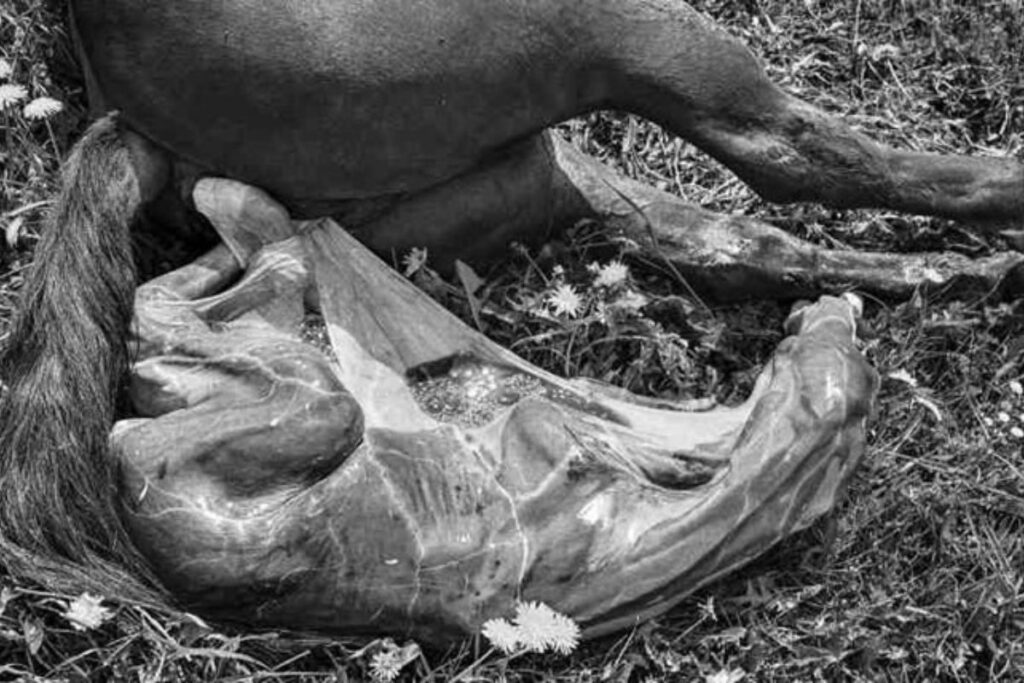Menu

Many months have passed and now it's time! Soon a new foal will be born, but what do you really need to do to make sure everything goes as it should? How should a good foaling generally take place? What should you be aware of? Learn more about this magical time and get a handful of tips along the way.
You may also like to read: Mare, Gelding or Stallion – Which is the best Match for You?
In this phase, which lasts 1-2 weeks before foaling, the mare will often have fluid accumulations under the abdomen and in the legs. At the same time the abdomen becomes significantly larger. In addition, the mare becomes more relaxed in her pelvis. It is called ‘soldering’. You can detect soldering by feeling the mare on the cross on each side of the tail root. If it is soft, then the foaling happens within a few weeks or maybe even just a few days. In addition, the mare's udders will grow, and at some point, in some cases, wax plugs will be seen. Some mares also get milk run. If the milk flow is strong, the foaling usually takes place within 24 hours. If the mare has gone far over time without any signs of foaling, the vet can start the process.
This phase lasts 1-6 hours. The uterus expands, the mare may stop eating and show colic-like symptoms. She lies down and gets up frequently, seeks away from the herd and pees as well as poops a lot. Eventually, she also starts sweating. Once the amniotic fluid passes, the next phase begins.
The foal is basically inclined with the back and then facing down wards and the forelegs bent together. In the expulsion phase, the forelegs are straightened out, it lies on its side / stomach and stretches its head forward. This will mean that during the good foaling itself you should first see the forelegs and then the small muzzle. However, one will be able to see a bluish amniotic membrane. It should take 5-20 minutes for the mare to push the foal out after the placenta has become visible.

It is relatively important that the mare stays laying down 5-10 minutes after foaling, as important blood is pumped through the umbilical cord to the foal. After the 10 minutes the mare can get up and the umbilical cord will be torn over 2-3 cm from the foal's belly.
You may also like to read: What to do? When a foal loses its mother
After the foaling, it is the placenta's turn to come out. It usually happens 2-3 hours after the foal is born (however, the contraction for the placenta starts already 15-30 minutes after the birth). Make sure that the whole ‘afterbirth’, as it is called, comes out, as otherwise it can damage the mare and make it sick. All of it must be out no later than 9 hours after birth.
• Clean towels
• Clean, temperate water
• Disinfectant soap or iodine
• A flashlight
• A phone so you can reach the vet
If makes complete sense that you want to help the mare. But the best thing one can do is let her be. However, if the process goes too slowly - ie. if the foal has not yet come out 20-25 minutes after the placenta has appeared - you can help the mare on its way. This is done by grabbing the foal's pipes and pulling it outwards / downwards in the pace of the mare's contractions. It may also be necessary to reach further into the mare and straighten the foal's legs. As a rule, however, it is not necessary, as over 90% of all foals occur without problems.
If the placenta is not broken shortly after the foal has come out, then it is important that you do. It can be done carefully with a clean knife or scissors - or just with your fingers.
To complete a good foaling, it is a really good idea to clean the place where the umbilical cord has been torn over. That is, the end that sits on the foal. It can be done with disinfectant soap and temperate water, or with a little iodine.
In this video you can see what it looks like when the foal turns and stretches its forelegs. And then you can see what to do if the birth does not progress as expected.
Dyrlaegevagten & Netdyredoktor
This article was originally published in March 2021 on Malgrétout.dk.